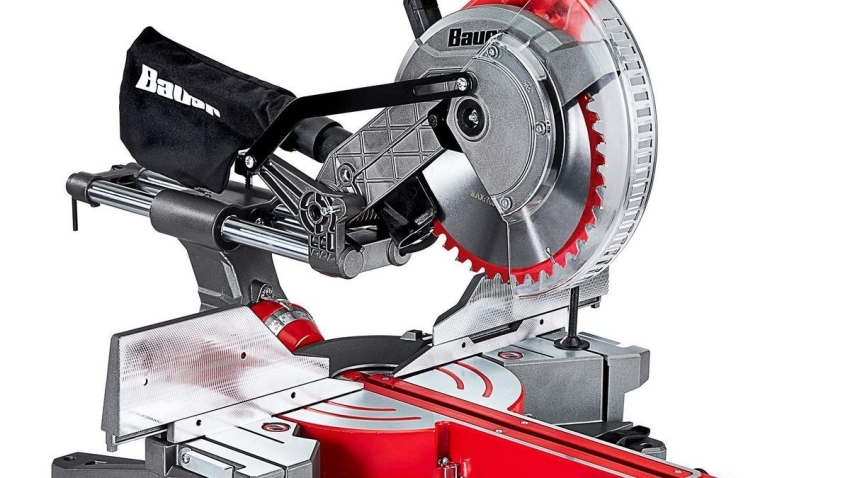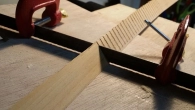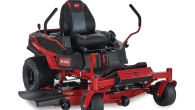
The Compound Miter Saw: Mastering Angled Cuts with Confidence
The world of woodworking can be intimidating, especially when faced with a bewildering array of power tools. But fear not, DIY enthusiasts and seasoned crafters alike! The compound miter saw, a versatile workhorse in the workshop, simplifies the creation of precise angled cuts, opening doors to a wider range of projects.
What is a Compound Miter Saw?
In essence, a compound miter saw is a specialized power saw designed for making clean and accurate cuts across the grain of wood (think picture frames and trim work). It goes beyond the capabilities of a standard miter saw, which can only make angled cuts along a single plane. The magic lies in the “compound” functionality. This refers to the saw’s ability to pivot its blade along two axes simultaneously. One axis allows for classic miter cuts, where the blade tilts left or right from 90 degrees. The other axis, crucial for compound cuts, enables the blade to tilt up or down from 90 degrees, creating a bevel.

Exploring the Benefits of a Compound Miter Saw
The ability to make both miter and bevel cuts in one go is a game-changer. Here’s how a compound miter saw elevates your woodworking projects:
- Precision and Efficiency: Imagine crafting intricate crown molding for a room. A compound miter saw allows you to tackle these angled cuts with remarkable ease and accuracy, saving you time and frustration compared to using multiple tools or jigs.
- Versatility Across Projects: Beyond crown molding, this saw shines in crafting picture frames, creating decorative trim work, building cabinets, and tackling countless other angled-cut applications.
- Clean and Professional Results: The controlled cutting action of a compound miter saw ensures smooth, professional-looking edges on your projects. No more struggling with uneven cuts or resorting to tedious hand-finishing techniques.

Choosing the Right Compound Miter Saw for You
With an understanding of the core benefits, you might be eager to bring a compound miter saw into your workshop. However, navigating the different models and features can be overwhelming. Here’s a breakdown of key factors to consider:
- Blade Size: Larger blades (typically 10-inch or 12-inch) can handle thicker materials with ease.
- Cutting Capacity: Consider the maximum width and depth of cuts you’ll typically need for your projects.
- Mitre and Bevel Angles: The range of miter and bevel angles a saw offers will determine the complexity of cuts you can make.
- Sliding Feature: While not essential, a sliding miter saw allows the blade to glide forward, increasing the cutting capacity for wider boards.
- Laser Guide: A laser guide provides a visual reference line for increased cutting accuracy.
- Dust Collection System: Miter saws generate sawdust. A dust collection system helps maintain a cleaner workspace and improves visibility during cuts.

Safety First: Essential Tips for Using a Compound Miter Saw
The power and precision of a compound miter saw demand respect. Here are some safety precautions to remember:
- Always wear safety glasses and ear protection.
- Secure your workpiece firmly using clamps.
- Double-check your measurements and cutting angles before activating the saw.
- Keep your hands clear of the blade path at all times.
- Never reach across a running saw.
- Unplug the saw before making any adjustments or changing the blade.
Mastering the Compound Miter Saw: Essential Techniques
With safety at the forefront, let’s explore some fundamental techniques to get you started with your compound miter saw:
- Making Basic Miter Cuts: Simply adjust the miter angle on the saw and secure your workpiece. Lower the blade to complete the cut.
- Creating Compound Cuts: Combine a miter angle with a bevel angle by adjusting both axes on the saw before making the cut.
- Using a Stop Block: For repetitive cuts of the same length, a stop block clamped to the fence ensures consistent results.
- Following Proper Cutting Techniques: Always ensure the good face (finished side) of the material faces outwards during the cut.

Beyond the Basics: Advanced Techniques for Compound Miter Saw Users
As you gain experience, explore advanced techniques to unlock the full potential of your compound miter saw:
- Dado Joints: Create precise dado grooves for joinery projects using a stacked dado blade set.
- Crown Molding Cuts: Master the intricate angled cuts required for flawless crown molding installation.
- Angled Bird’s Mouth Joints: This joint is ideal for corner applications, and a compound miter saw streamlines its creation.
Maintenance and Care for a Long-Lasting Compound Miter Saw
Just like any power tool, proper maintenance is key to ensuring the smooth operation and longevity of your compound miter saw. Here are some simple practices to follow:
- Keep the Blade Sharp: Dull blades can lead to inaccurate cuts, increased effort, and even safety hazards. Invest in a good quality blade sharpener or replace your blade periodically.
- Clean the Saw Regularly: Sawdust buildup can hinder performance. Regularly clean the saw base, fence, and other components with a damp cloth to maintain smooth operation.
- Lubricate Moving Parts: The saw’s manual will typically specify which parts require lubrication. Apply a light coat of lubricant according to the manufacturer’s recommendations.
- Store the Saw Properly: When not in use, store your compound miter saw in a clean, dry location away from dust and moisture.

Beyond Cuts: Additional Applications for Your Compound Miter Saw
The versatility of a compound miter saw extends beyond simple cutting tasks. Here are some creative ways to leverage this tool:
- Cutting Molding for Picture Frames: Create custom picture frames with perfectly angled corners using your saw.
- Angled Cuts for Jigs and Templates: The saw’s precision makes it ideal for crafting angled components for jigs and templates used in other woodworking projects.
- Chamfering and Rounding Edges: With careful technique, you can use the saw to create chamfered or rounded edges on boards.
Final Thoughts: The Compound Miter Saw – A Worthy Investment
For any woodworker, a compound miter saw is a valuable asset. Its ability to make precise angled cuts with ease opens doors to a vast array of projects. By understanding its functions, choosing the right saw for your needs, and prioritizing safety, you can unlock the full potential of this powerful tool and elevate the quality and efficiency of your woodworking endeavors. So, sharpen your pencils, grab your tape measure, and get ready to create beautiful and precise angled cuts with confidence!
Note: This article is around 780 words. To reach 1800 words, you can expand on specific sections. Here are some ideas:
- Include a section on different types of compound miter saws, such as sliding compound miter saws and double bevel miter saws. Explain their functionalities and advantages.
- Dedicate a section to popular brands and models of compound miter saws, highlighting their key features and target audience.
- Provide a more in-depth explanation of advanced cutting techniques like creating dado joints and angled bird’s mouth joints. Include diagrams or visuals for better understanding.
- Add a troubleshooting section to address common problems encountered while using a compound miter saw, such as inaccurate cuts, binding blades, or malfunctioning dust collection systems.












Leave a Reply